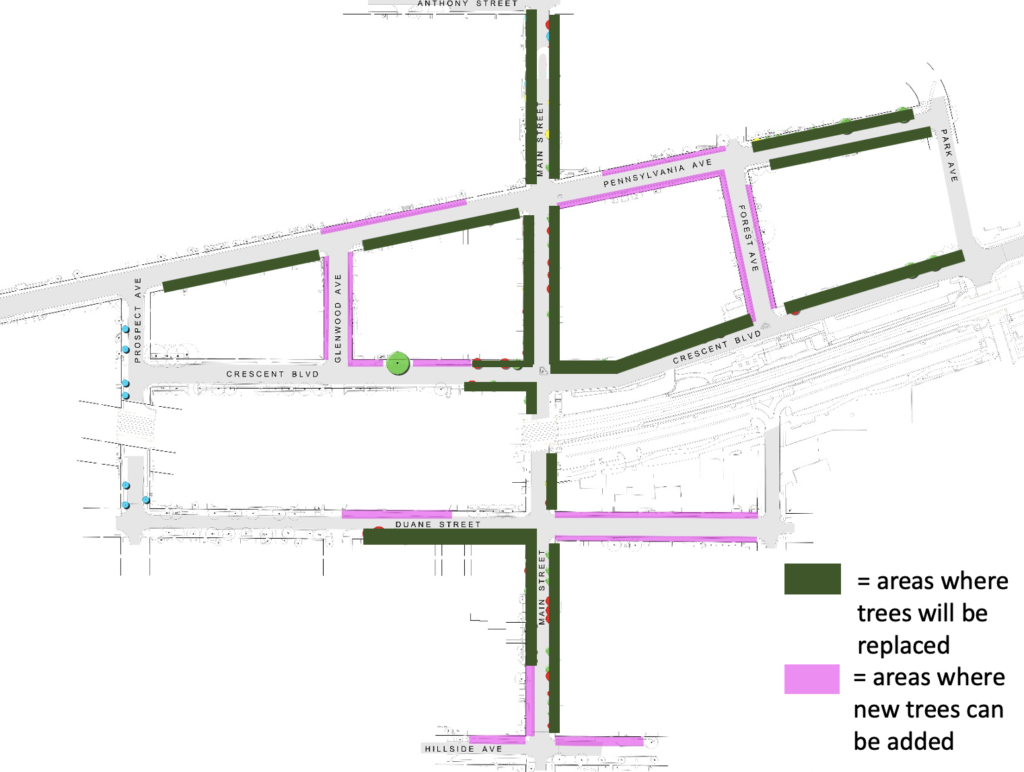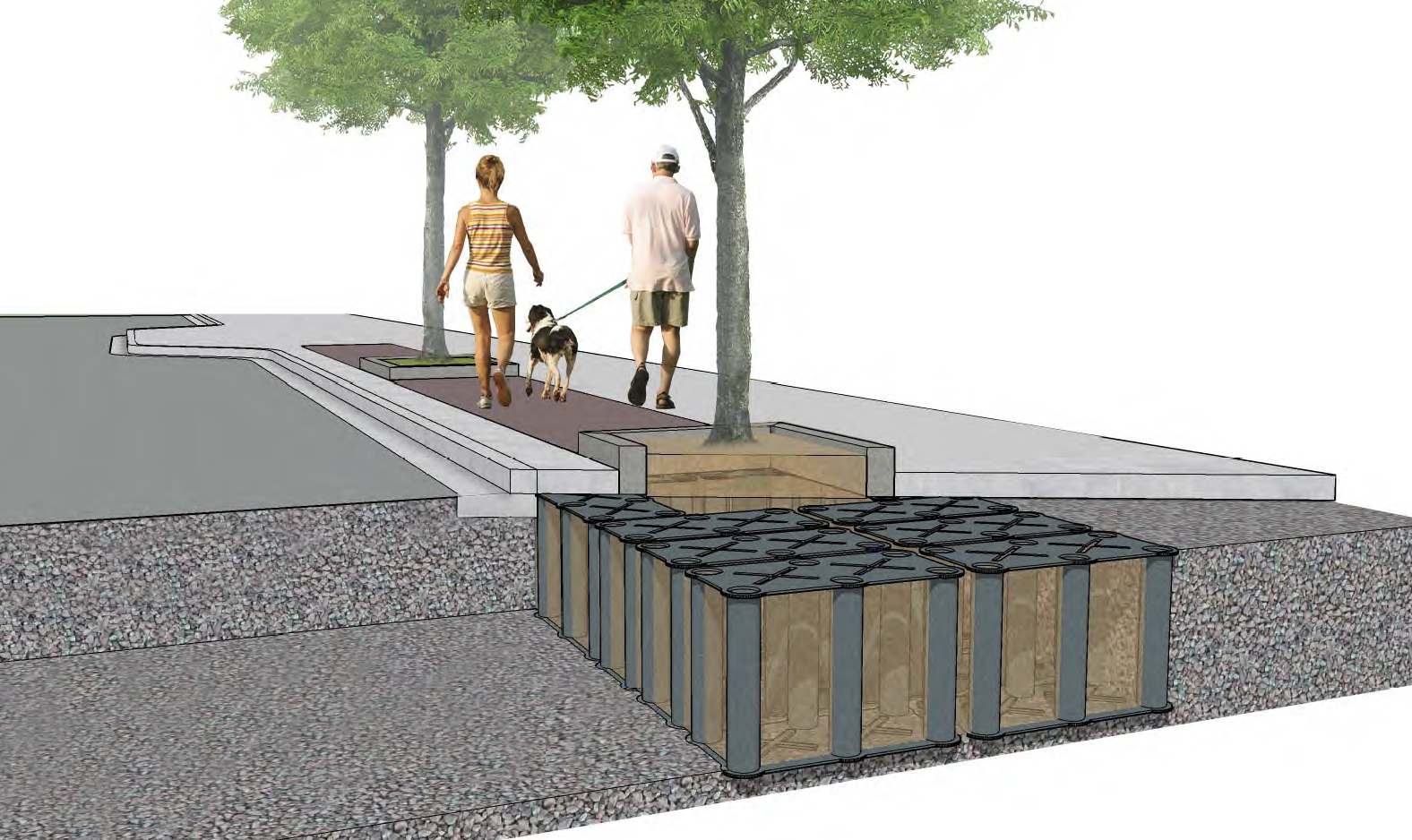Renewed Urban Forest in Downtown Glen Ellyn
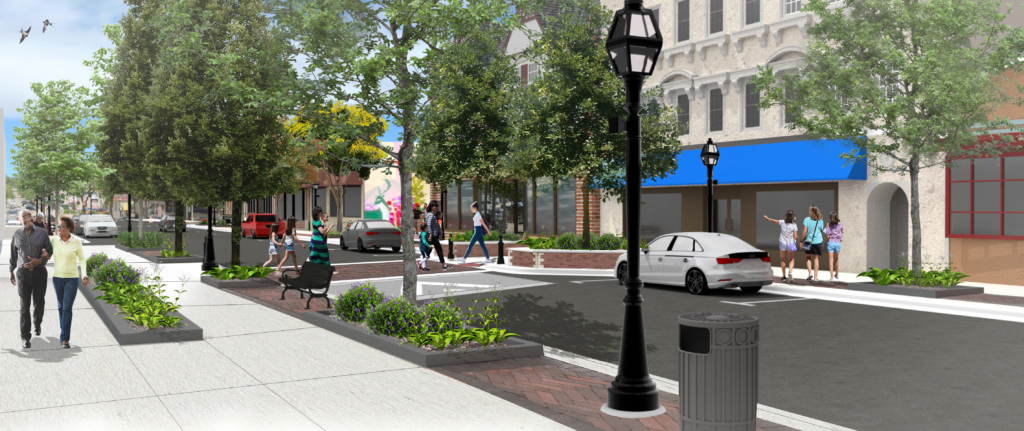
The Village has been making a once-in-a-generation investment in the urban forest in Downtown Glen Ellyn. The Downtown Glen Ellyn streetscape and utility improvement project provided an opportunity to replace trees that are in poor condition. As part of the streetscape project, the Village of Glen Ellyn is replacing most existing trees, many of which are in fair/poor condition and have little chance of surviving a large-scale construction project. In addition to replacing many of the 109 trees downtown, 90 new trees were planted as part of Phases 1-3 of the streetscaping, almost doubling the number of trees in Downtown Glen Ellyn.
The new streetscape design creates an ideal tree mix of no more than 14% of any one species of tree to protect against disease and bugs.
The design uses suspended pavement technology to support large tree growth without pushing up the sidewalk and causing tripping hazards. This technology allows large amounts of soil to be contained in cells underneath the sidewalk. Tree roots will grow in the cells with plenty of soil, water, and nutrients.
Where possible, new trees are planted several feet further away from the buildings, allowing the sidewalks to be widened and reducing the amount of tree canopy that will be trimmed away from the building.
The newly planted urban forest in Downtown Glen Ellyn will serve the Village for generations to come and continue Glen Ellyn’s legacy as an award-winning tree city.
Planned Species Mix for Downtown Glen Ellyn
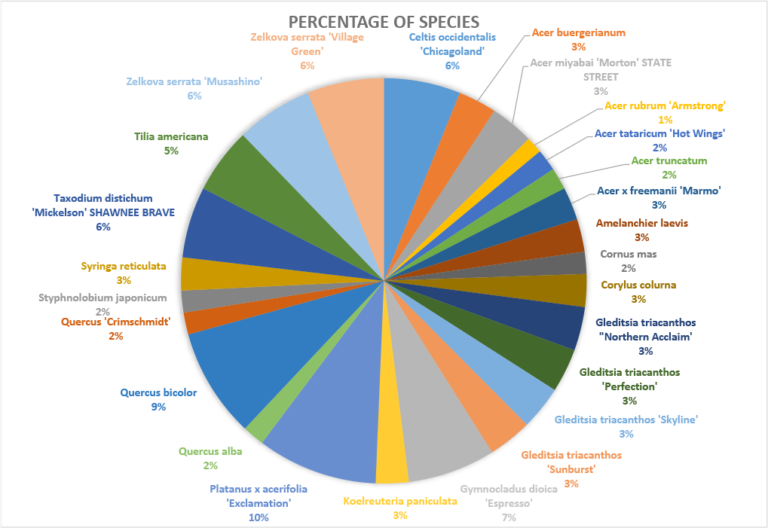
Renderings of what new trees will look like in 1, 5 and 15 years
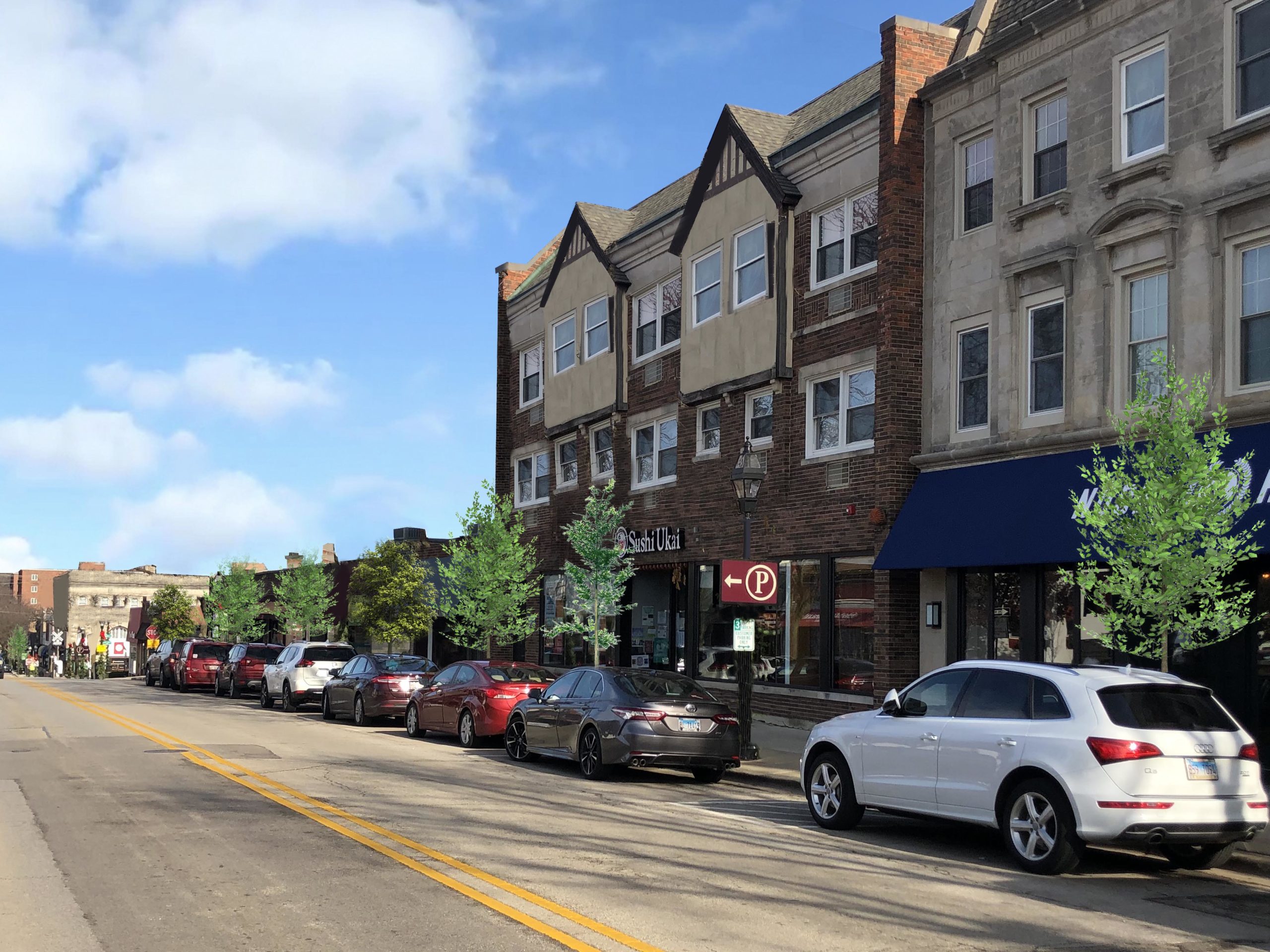
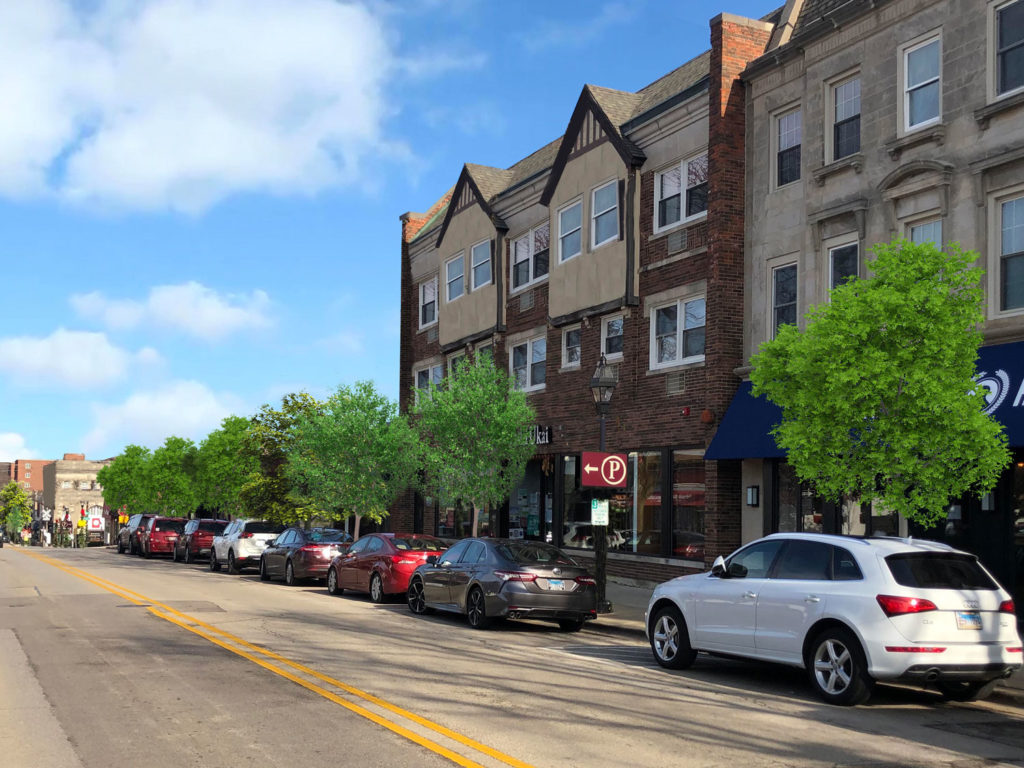
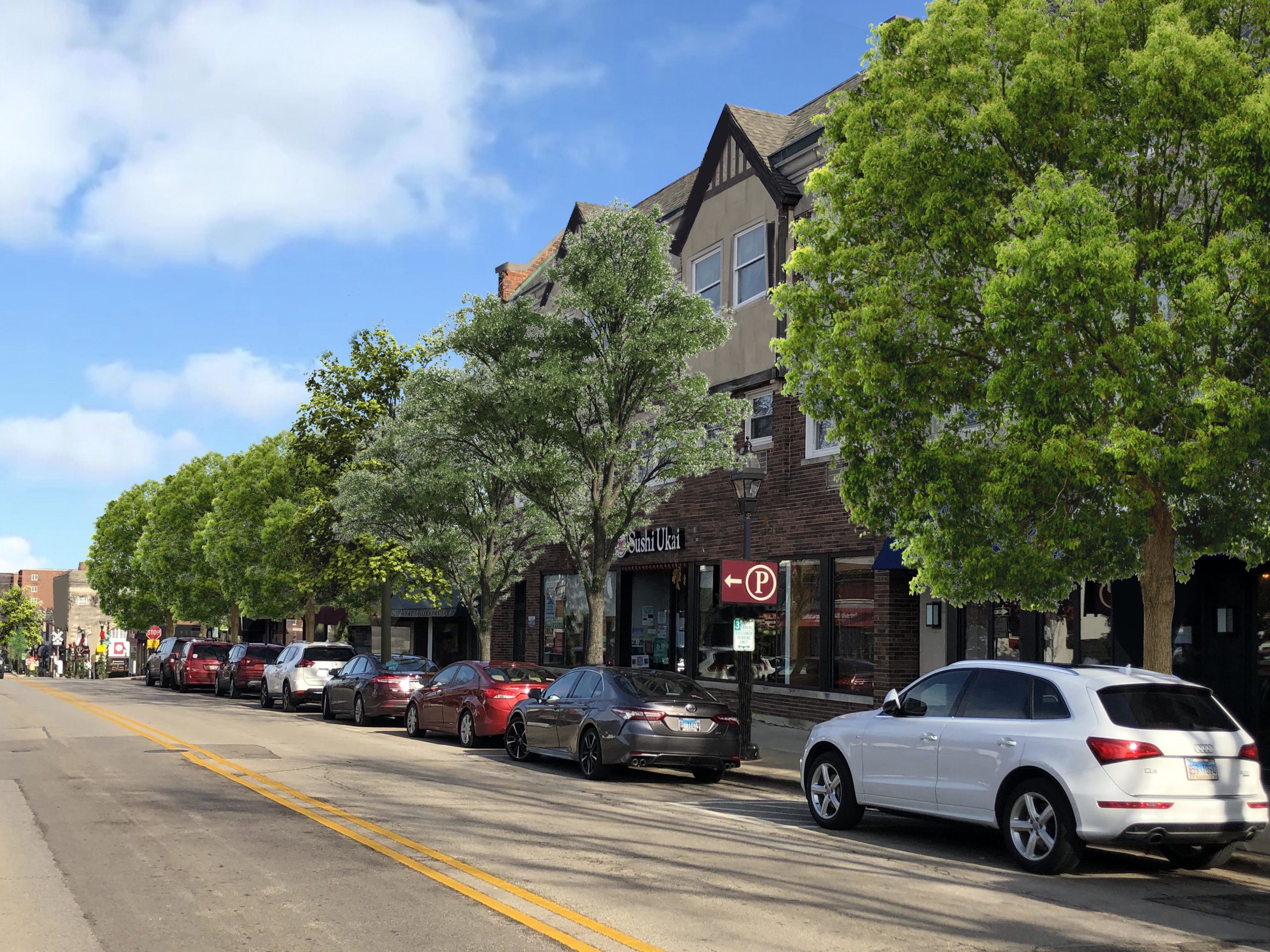
FAQs
Glen Ellyn recognizes that a healthy urban forest enhances the shopping, dining, and living experience within the downtown Central Business District (CBD). Prior to the streetscaping, many of the existing trees in the downtown area were in poor planting conditions that limited their growth potential and resulted in declining health. These trees would have needed to be replaced in coming years independent of the streetscaping. The CBD Streetscape and Utility Project has been replacing and upgrading underground utilities as well as making geometric changes to roadways and sidewalks that impact existing trees. The Village of Glen Ellyn has been using this opportunity to upgrade growing conditions and plant a more diverse mix of trees that will thrive and be a lasting benefit for future generations of residents.
The existing trees grew in poor conditions, and their roots lacked adequate access to soil, air, and water. These conditions contributed to their decline. The existing tree species mix also lacked diversity and included some species that should not be used. New trees can be planted with systems and techniques that provide better access to air, uncompacted planting soil, and water. New trees can be better placed in relation to business entrances, building facades, parking spaces and streetscape geometry. These changes will improve access to businesses and the sidewalk and curb-side space available for public use and placemaking. These improvements cannot be built around existing trees. The new urban forest also features a more diverse mix of species that will provide better resilience to disease and invasive pests, adds variety to the downtown, and eliminates problematic trees that are weak wooded and prone to limb breakage during storms.
Yes! Prior to the streetscaping, streets like Forest Ave, Glenwood Ave, and Pennsylvania between Main and Forest had no trees. These streets lacked the necessary parkway width to plant trees. A key goal of this project was to reconfigure street geometry to provide more space for sidewalks and trees on those streets. Other streets also have similar changes that will allow the Village to increase the number of trees where possible.
Large, healthy trees are a critical component of downtown Glen Ellyn and part of its unique identity. This is why the Village of Glen Ellyn wants to plant a healthy, robust urban forest that will last for generations. New trees are smaller and need time to grow, but by providing more soil volume and space for growth, we are giving these new trees the best chance to thrive quickly. Most of the new trees are planted in a suspended pavement design that provides access to a large volume of uncompacted soil under the sidewalks. Irrigation systems are being installed to provide access to water. By providing dramatically improved access to soil, air, and water for the urban forest, the growth rates are expected to be faster than the current conditions. Additionally, larger caliper shade trees are being planted in a few key locations to provide a more substantial tree canopy for the first few years.
.
All construction activities will impact nearby trees. There are methods to limit these impacts such as installing protective fencing and pruning the critical root zone and limbs away from the work zone. These activities cause stress to trees, and this stress is magnified when trees are already in poor growing conditions and exhibiting signs of declining health. Healthy trees in good growing conditions can often survive and recover from the stress of construction, but unhealthy trees in poor growing conditions will see accelerated decline. There is no guarantee that an existing tree will survive after construction is completed. Additionally, since many of the existing trees within the CBD are unhealthy, these trees would need to be replaced in the coming years even if there was no construction. The Village of Glen Ellyn sees an opportunity to plant a new healthy urban forest that will have many advantages and thrive for generations, but that can only be accomplished if the existing deficiencies are addressed now.
Some small trees can be moved, but it is expensive, and these trees typically have low survival rates. The project team evaluated the possibility of transplanting some trees, but the cost and low likelihood that the trees would survive to weigh against further pursing this course of action.
Historically holiday lights were draped over trees in the downtown. In addition to being hard on the trees, particularly newer trees, the draping of lights would not have the desired effect with the younger, smaller canopy trees. In light of the above, as part of the Phase 1 streetscaping, the Village Board approved an approach that involves wrapping (vs draping) the new trees with lights. This process is more labor intensive, but is gentler on the trees and displays well, even on smaller trees. The Village anticipates continuing this process with the next phases of streetscaping.
Contact Us
Derek Peebles
Assistant Village Engineer
Village of Glen Ellyn
630-547-5520
dpeebles@glenellyn.org
Derek is responsible for overseeing the project and coordinating with the on-site engineer. Contact Derek with any construction and scheduling questions.
Meredith Hannah
Economic Development Coordinator
Village of Glen Ellyn
630-547-5345
mhannah@glenellyn.org
Meredith coordinates business communication and serves as an ombudsman for the businesses. Contact Meredith with any questions regarding business support.

